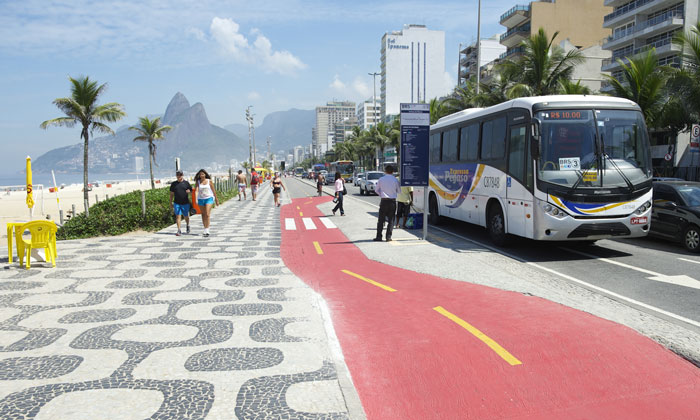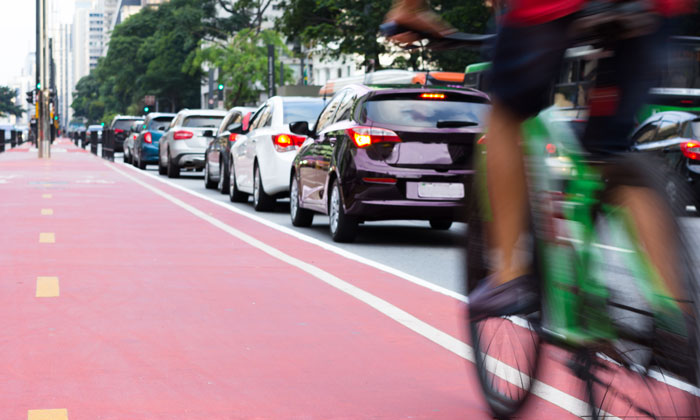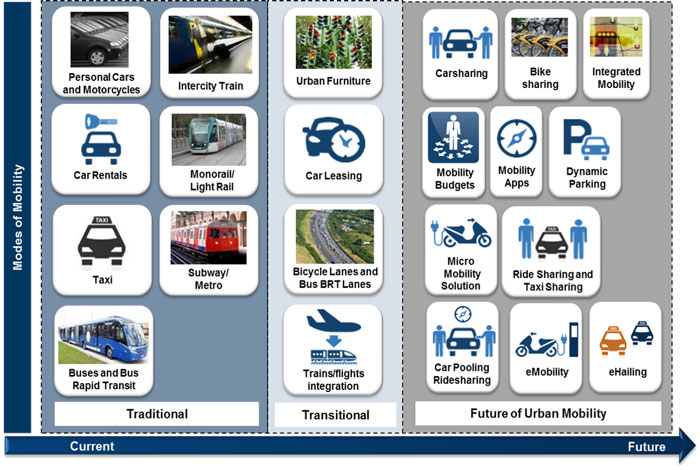Understanding safety in Latin America’s new mobility marketplace
- Like
- Digg
- Del
- Tumblr
- VKontakte
- Buffer
- Love This
- Odnoklassniki
- Meneame
- Blogger
- Amazon
- Yahoo Mail
- Gmail
- AOL
- Newsvine
- HackerNews
- Evernote
- MySpace
- Mail.ru
- Viadeo
- Line
- Comments
- Yummly
- SMS
- Viber
- Telegram
- Subscribe
- Skype
- Facebook Messenger
- Kakao
- LiveJournal
- Yammer
- Edgar
- Fintel
- Mix
- Instapaper
- Copy Link
Posted: 18 June 2018 | Luke Antoniou - Intelligent Transport, Yeswant Abhimanyu - Frost & Sullivan | No comments yet
Transport networks worldwide are in a state of flux, and Latin America is no exception, says Yeswant Abhimanyu, LatAm Research Manager at Frost & Sullivan. In this interview with Intelligent Transport’s Luke Antoniou, Abhimanyu explains how new mobility business models and technologies are playing their part in improving safety and security for both passengers and drivers.


Before you can understand how new business models are helping improve safety and security across Latin America, you must understand the changing nature of mobility in the region.
This is Abhimanyu‘s opening gambit and it’s easy to understand why. Rapid change is taking hold of transport in cities across Latin America, but one inescapable fact remains: traditional methods of transport rule the roost.
“In many of the big cities in Latin America, there’s still a heavy focus on traditional modes of transportation and personal vehicle ownership,” he says. “We’re seeing a lot of new business models largely embracing the sharing economy and new solutions that are becoming an additional alternative to everyday mobility. In some cases, they’re complementing vehicle ownership rather than replacing it, but there are trends that suggest in the future, alternative mobility services will change the way people live.”
New mobility services are gradually being seen as genuine transport alternatives across demographics and generations, impacting car ownership and usership down to what is deemed strictly necessary. This change is partly driven by changing social demographics and usage by tech-savvy generations.
“We’re seeing that, in general across the demographics, new mobility business models are experiencing growing uptake. When we’re talking about vehicle ownership versus usership, there’s definitely more usership amongst the younger generations,” Abhimanyu states. “Increasingly, younger generations are using personally owned cars only when they need to, for example, during the weekend, if they are leaving the city. During the week, certain demographics are using several different forms of public transport and integrated mobility, like bike-sharing or e-hailing, for the first and last mile of their journeys to avoid congestion.”
Safety: the highest priority
With the uptake increasing and attitudes changing, there are encouraging signs that mobility will change for millions of people across Latin America, and it is here that safety and security come into the equation. With adoption rates of new mobility on the rise, any vehicle – whether shared, owned or hired – must be safe, and known to be safe, before a passenger or driver will consider using it. This is a fact not lost on those developing new transit solutions, or those running traditional services.


Younger generations across Latin America are increasingly using a mix of public transport modes and mobility methods, and importantly, are favouring vehicle usership over ownership
“Safety and security of passengers and drivers is paramount. It is the number one priority on the agenda of transport providers,” explains Abhimanyu. “New mobility models – e-hailing, bike-sharing, car-sharing – which feed into the overall mobility landscape, as well as public transportation – like buses, metro, trams – rank the safety and security of users as their primary concern.”
With several new mobility services like ride-sharing and e-hailing relying on cars, it’s interesting to note how automotive OEMs are using technology to keep passengers and drivers safer. To begin with, there are improvements in traditional safety features, such as airbags and seatbelts, as well as the Latin American NCAP that ensures all cars are road-worthy. In addition, there are also a number of new technologies beginning to break through into the region that draw on vehicle connectivity and advanced driver-assistance systems (ADAS), making vehicles safer.
“The future of connected cars is beginning to be introduced in Latin America. Connected services, which are becoming available in countries across the region, ensure that 24-hour assistance is available for drivers and passengers in emergency situations and can make calls to emergency and breakdown services,” Abhimanyu says. “Technology and connected services from vehicle manufacturers, as well as third parties, are influencing better safety and security in mobility for people.”
The aftermarket in Latin America – retrofitting solutions focusing primarily on basic services – has been alive and well. The market offers affordable solutions for both car and fleet owners to improve vehicle safety and security.
“We’ve seen increasing implementation of these technologies in the last eight or nine years,” says Abhimanyu. “Track-and-trace and engine immobilisation solutions have been especially well used in Latin America’s fleets and are a big part of the vehicle aftermarket. There are cost savings to be made, for example, on insurance by fleet managers as usage-based insurance solutions are beginning to be offered.”
Track-and-trace technology has been a mainstay in Latin America for around the last two decades, according to Abhimanyu, hence the high adoption rates. But there are encouraging signs that the new connected services will also grow to hold a similar status: “Though the newer technology, like connected services in Brazil, has only just come to this market in the last five years, with every new service that is introduced people have to become accustomed to it. They already understand it and can see the value in it; that is crucial to the success of these new safety measures.”
In addition to connected services, assisted-driving technologies have also started making their way into the Latin American market; in a recent Frost & Sullivan research piece, Abhimanyu says one of the key findings was the high inclusion and increasing penetration of C+ segment vehicles in the region fitted with such technology, from blind spot detection and lane departure warning, to adaptive cruise control.


Technologies based on vehicle connectivity and advanced driver-assistance systems are beginning to break through into the Latin American mobility market, helping to make passengers and drivers safer
New technology, new mobility
While these types of technologies are being fitted and retrofitted to help ensure the safety of vehicles, there is still work to be done by new mobility businesses to guarantee that their services are safe.
Indeed, companies implementing new mobility business models and introducing new services all share the same goal in terms of passenger and driver safety, and it is part of a megatrend known as “innovating to zero”.
“What this means is that they are developing and implementing new technology that can eventually reduce the number of accidents, fatalities and even emissions to zero,” he says. “Innovating to zero is obviously also innovating to an ideal future, but when all business models converge to adapt to this idea, it makes it more likely.”
A part of this innovation in the mobility landscape is seeing companies with new mobility business models in Latin America use machine learning to identify risk. As with almost all things relating to today’s transport economy, this requires a tremendous amount of data collection and real-time analysis but produces some very useful results. Using ride-sharing as an example, Abhimanyu explains that AI algorithms can identify potential risks, whether analysing travel data to understand if it is safe for a car to be sent to a certain location, or assessing whether it is safe for a driver and passenger to use a certain road.
“This type of data analysis is being leveraged by a number of new mobility businesses in Latin America. If the algorithms can understand risk, then a passenger’s reason for wanting to travel to a location identified as high risk becomes paramount to whether the driver will take them,” he says.
One element to this risk is crime and there are a number of cities in Latin America where crime rates are above average. While data analysis can identify potentially unsafe areas, it cannot account for a passenger or driver unwilling to go to a certain location to use transport. This is a challenge that Abhimanyu says has an impact on the pace of growth of the new mobility market in Latin America.
“Let’s take a hypothetical situation: there are areas in a city centre that people don’t feel safe travelling to. Would it hinder the introduction of a bike-sharing solution if people have to walk to that area to get a bike? Absolutely, that’s just human nature.”
Collaboration across the transportation sector is more and more commonplace and this scenario is one in which Abhimanyu believes it needs to occur. City governments, traditional transport operators and new transport challengers must all work together to provide a streamlined, efficient transit system with a common goal: getting people from A to B safely.
Evidence that transport companies care about passengers’ wellbeing will only result in their being better aligned with the services on offer and the companies providing them. This relationship is key to ensuring that passengers feel safe using transport services, as it builds trust between a person and a brand.
For all its pitfalls, today’s obsession with social media has a significant role to play in helping to bridge gaps in trust within the new mobility market. As Abhimanyu explains: “When it comes to a number of sharing/hailing mobility solutions, the ability to see a social profile (for example, for a driver – their ratings, other rider’s reviews and so forth) on the platform can really help increase the confidence of riding with and using the service. With solutions such as inter-city ride-sharing, when the travel time is longer than usual, companies verify identity documentation and encourage users to have complete profiles on the platform. Registration can also be made through existing social networks. Sending of account activation emails or texts to check phone numbers also act as a further verification step. The whole ‘social avatar’ plays a vital role and it’s important to do that to increase people’s confidence and trust in a service.”


A chart illustrating how mobility services and public transport modes are set to evolve and change in the coming years
When smart cities become safe cities
The use of new technology, data collection and analysis isn’t limited to just the vehicles, passengers and drivers, though. There is a lot of innovation taking place at street level in Latin America in a bid to make its cities smarter. The criteria for a smart city is based upon the eight points of the ‘smart diamond’, encompassing: governance, energy, buildings, healthcare, citizens, mobility, infrastructure and technology. It is with these final three in mind that Latin American cities are beginning to make pedestrians, drivers and passengers safer, says Abhimanyu.
“The city governments and municipalities are beginning to make changes with the future in mind,” he explains. “The likes of illuminated pedestrian crossings, the revitalisation of traffic control systems, and separate bike lanes and bus lanes are all initiatives that are coming together to encourage cities to position themselves as smart cities in the future.”
The way data and information can be used to personalise and improve services goes a long way to ensuring the public can fully trust and take advantage of the modern transport options available today. The final thought is Abhimanyu’s, who summarises: “Safety and security is integral to the success of new mobility. The basis for improvements in this field is technology and data driven. For transport operators, fleet managers and those leading the new mobility revolution, it is the highest priority.”
Biography


Related topics
Mobility Services, Vehicle & Passenger Safety
Issue
Issue 2 2018
Related cities
Latin America
Related organisations
Frost and Sullivan
Related people
Yeswant Abhimanyu








